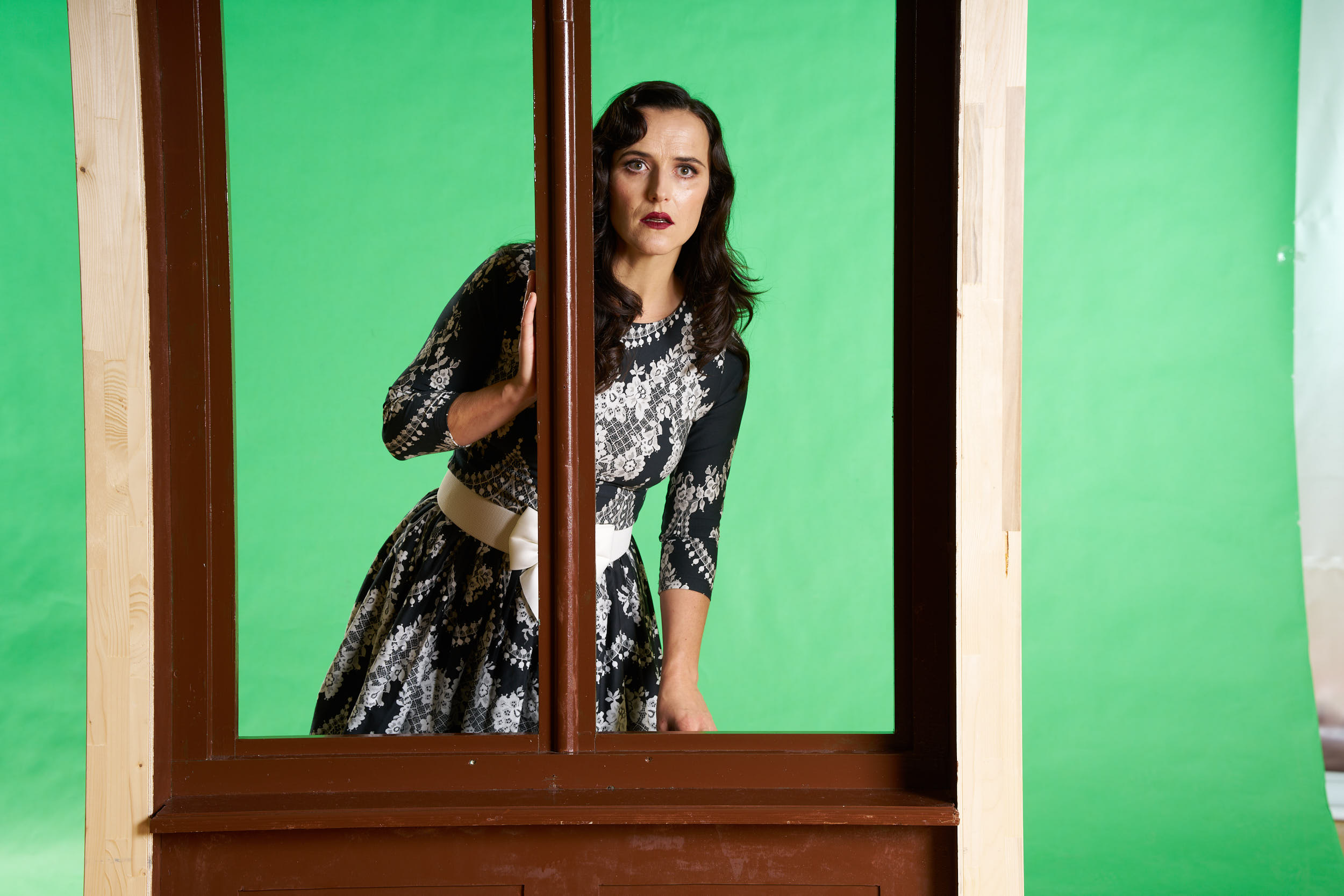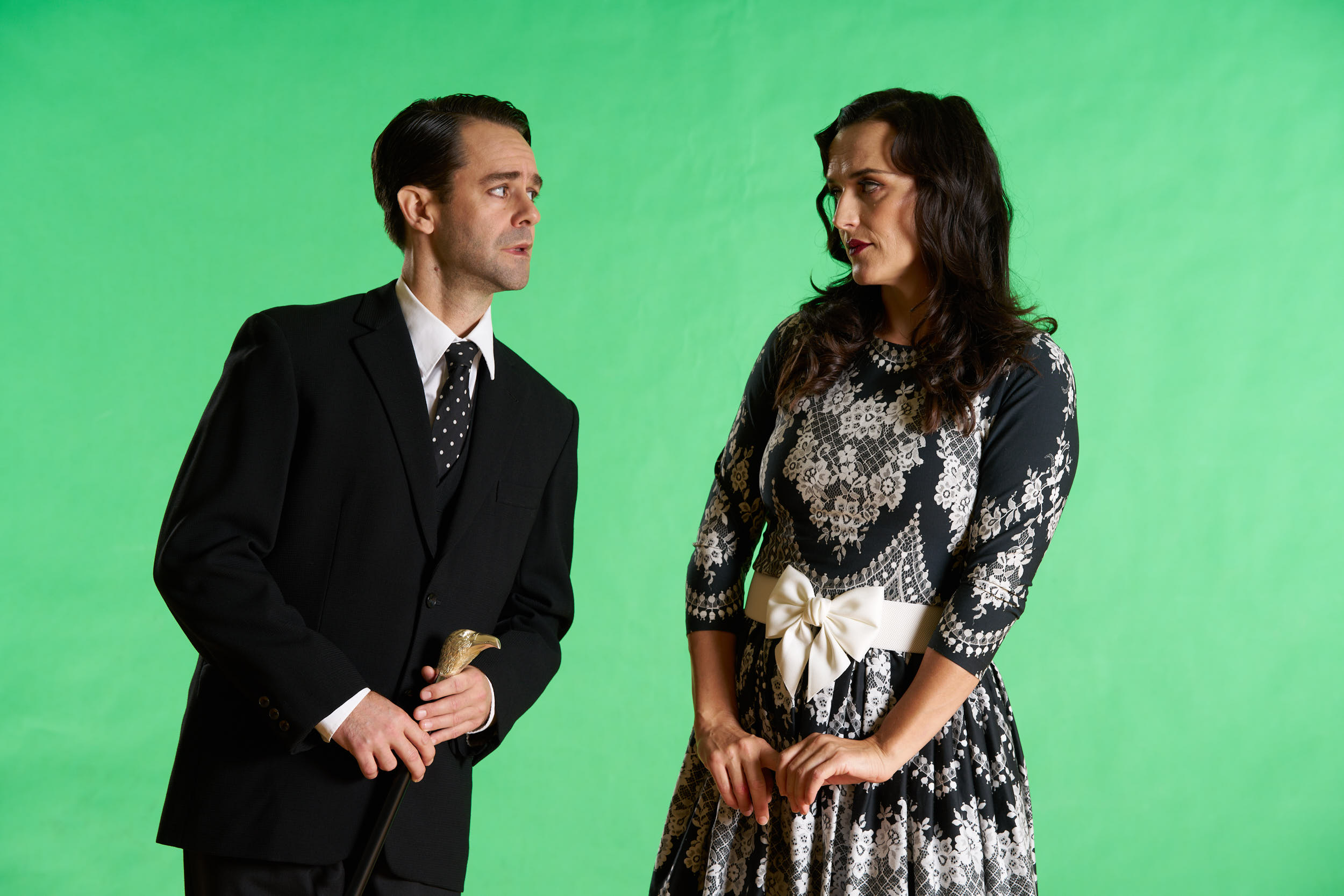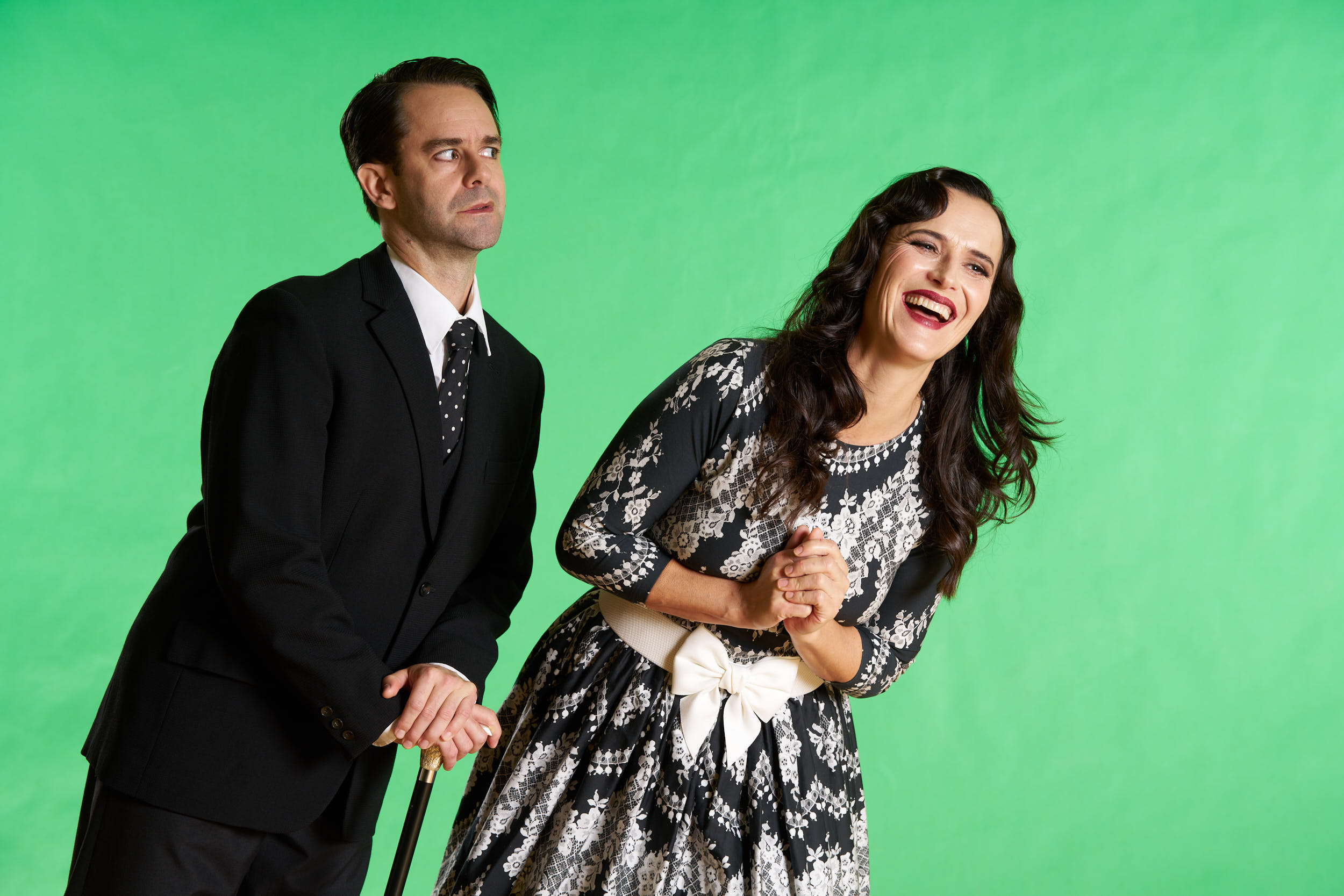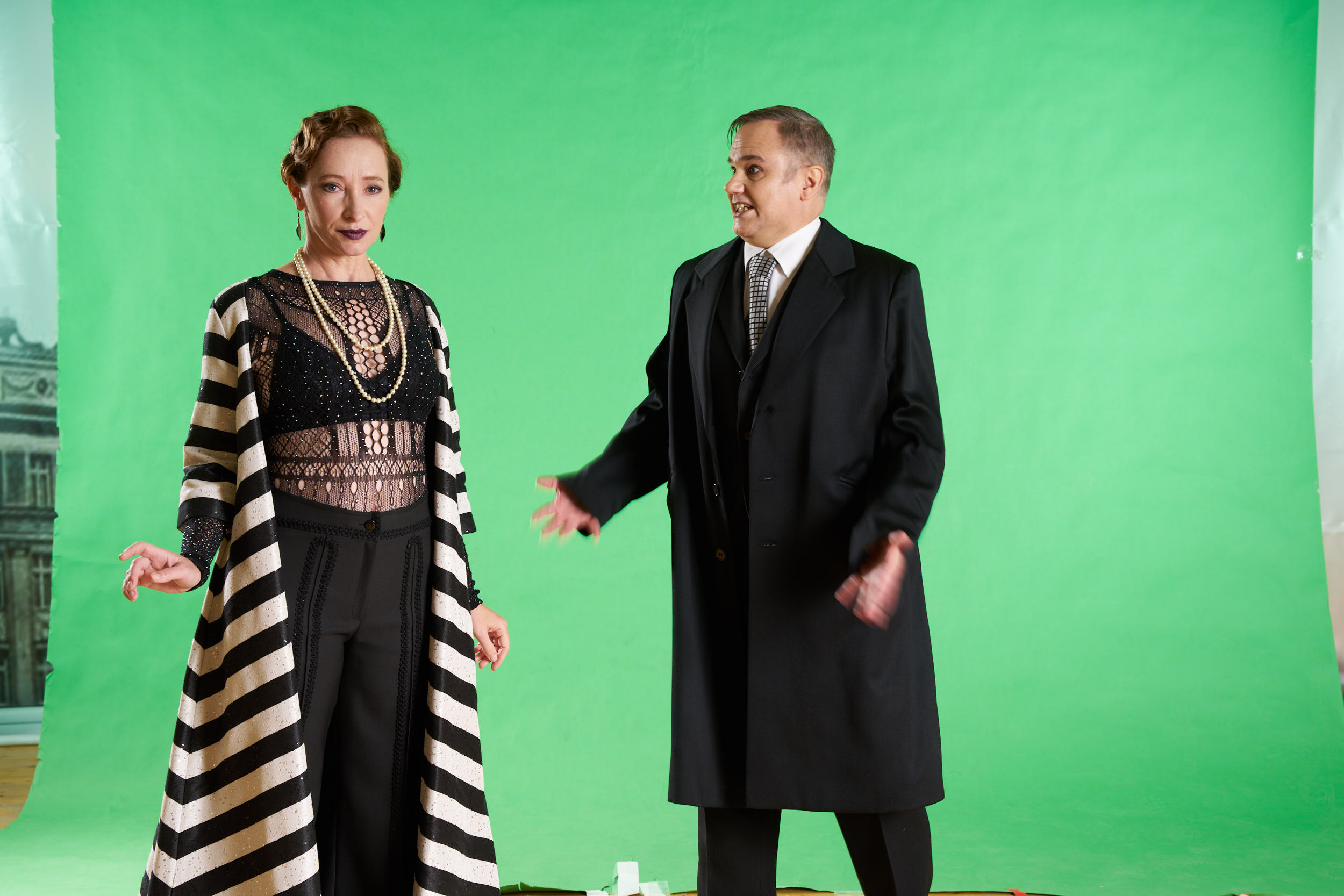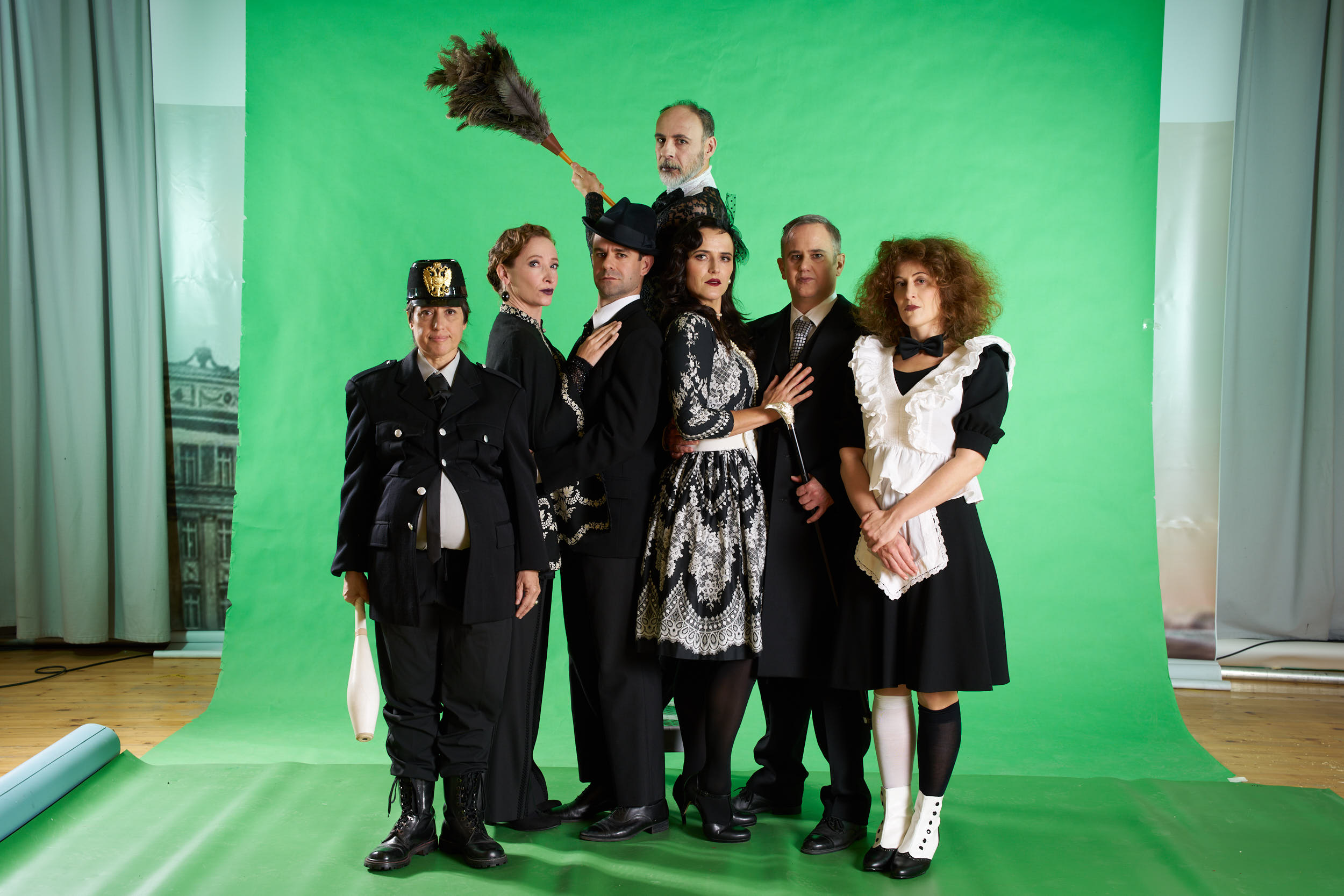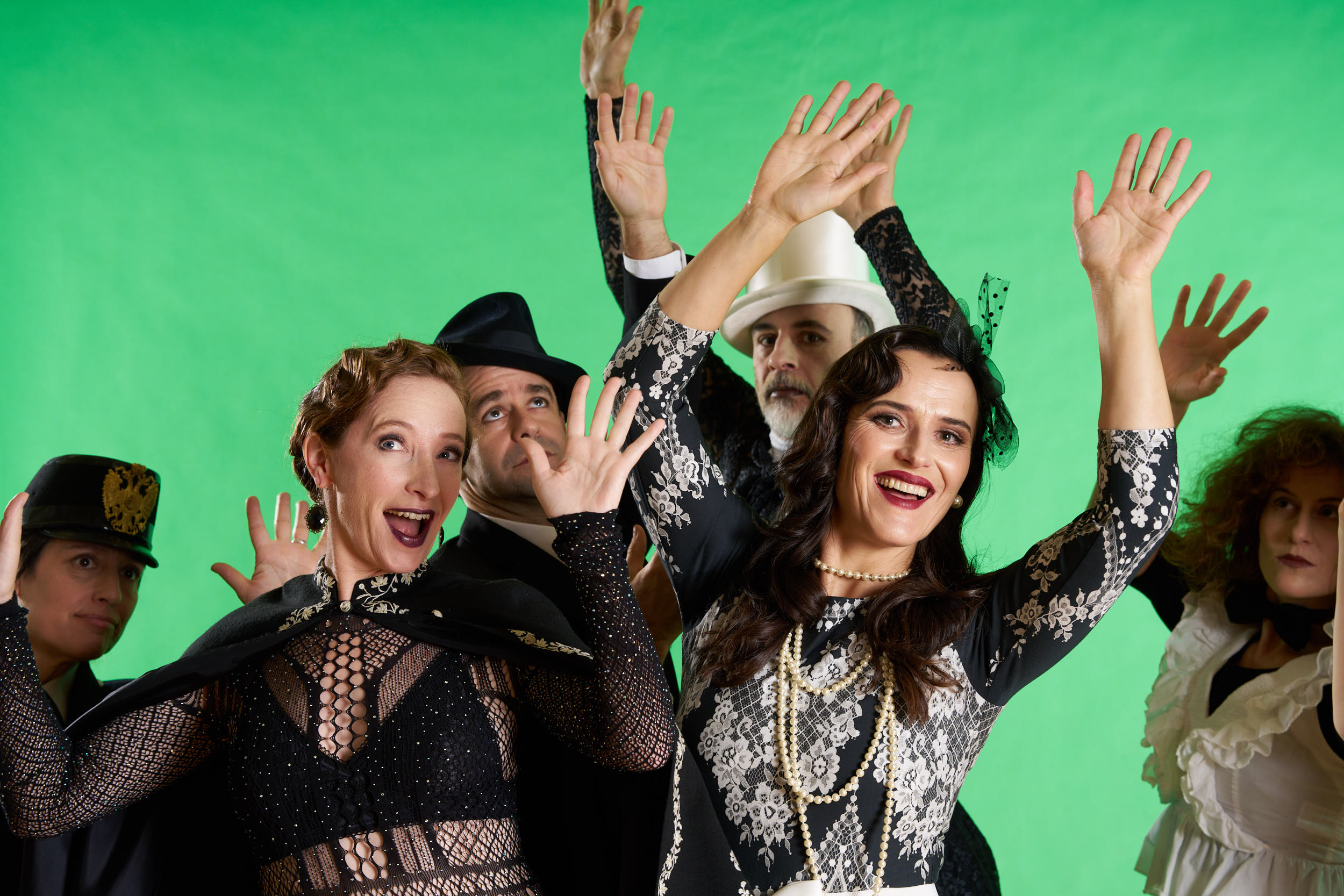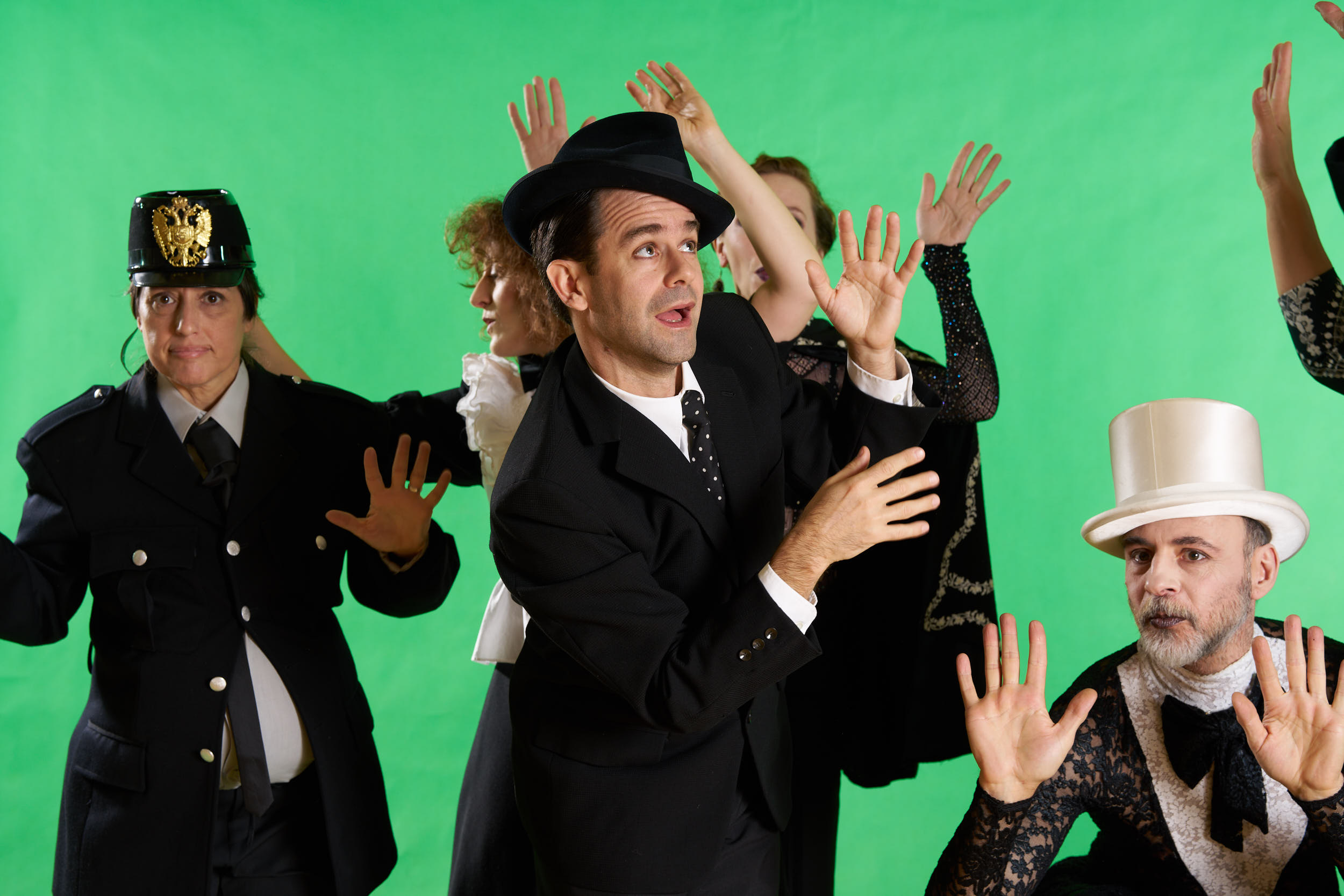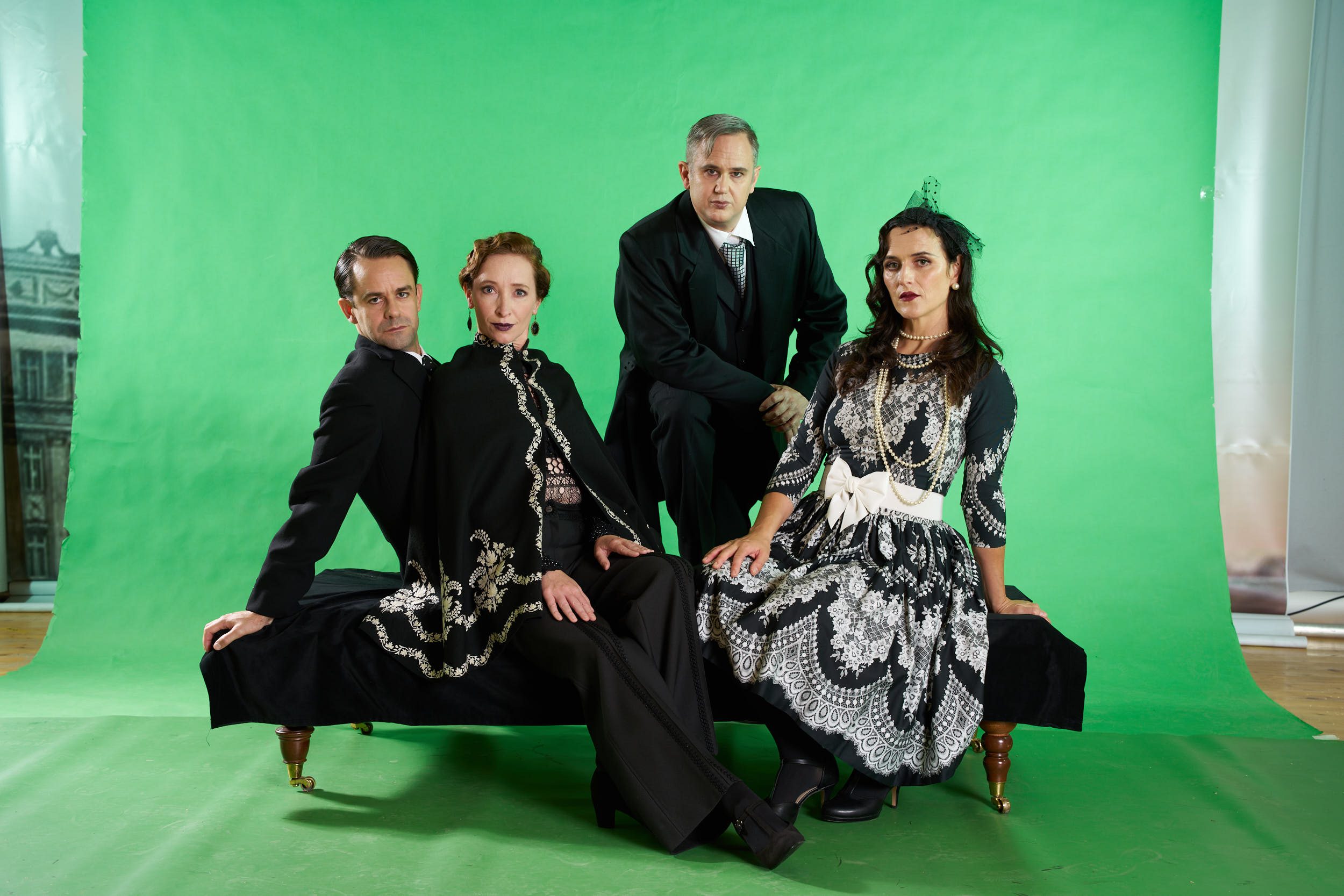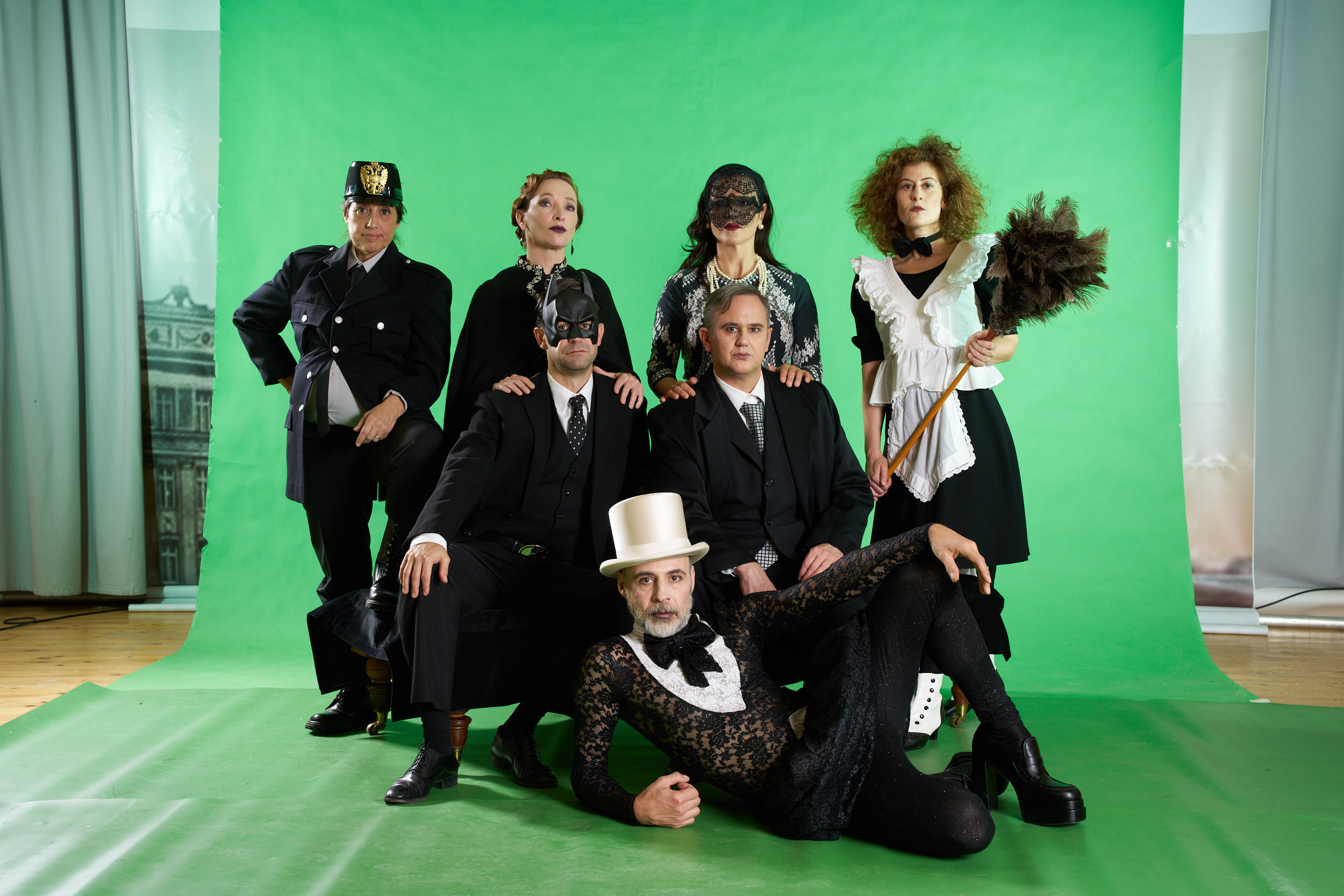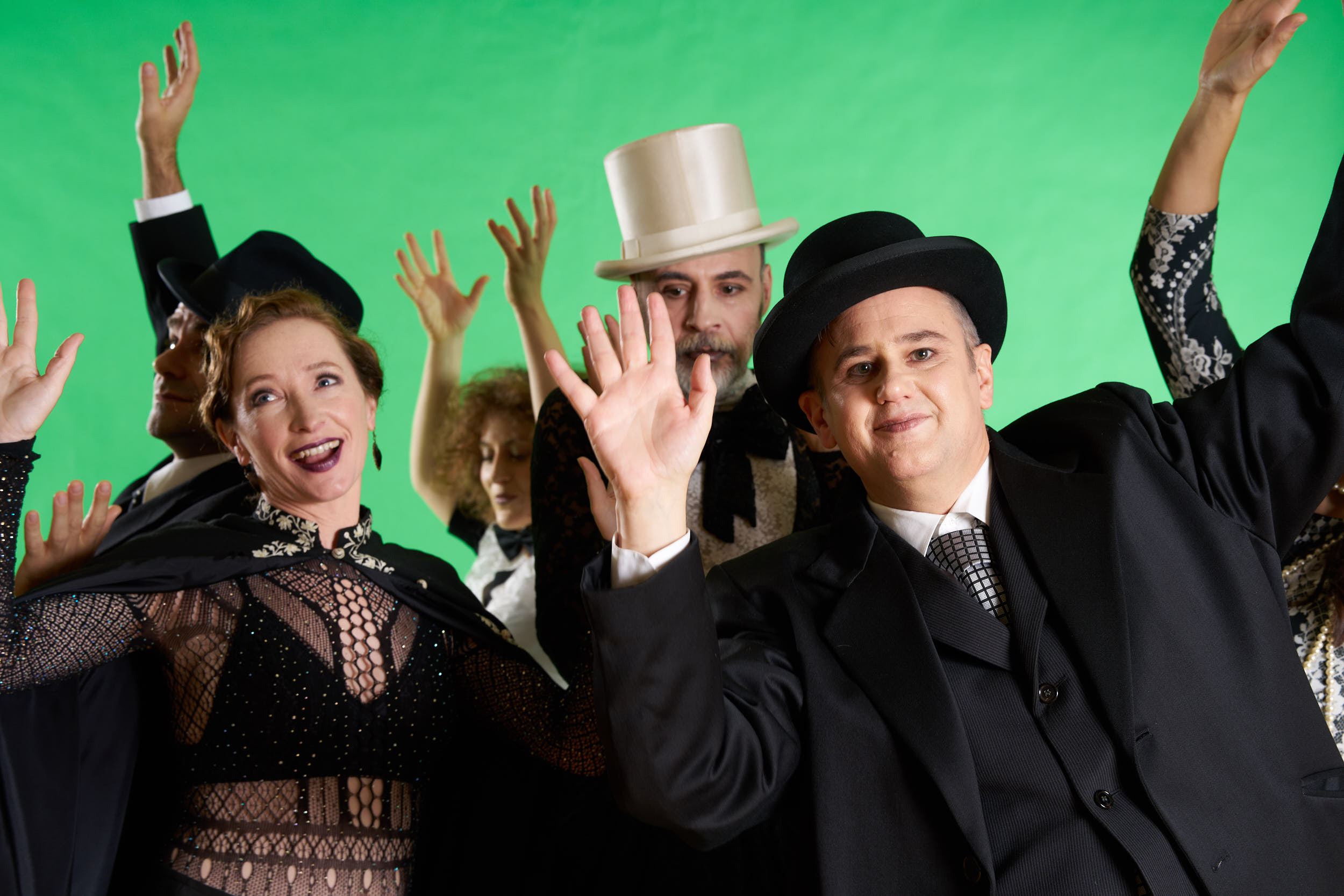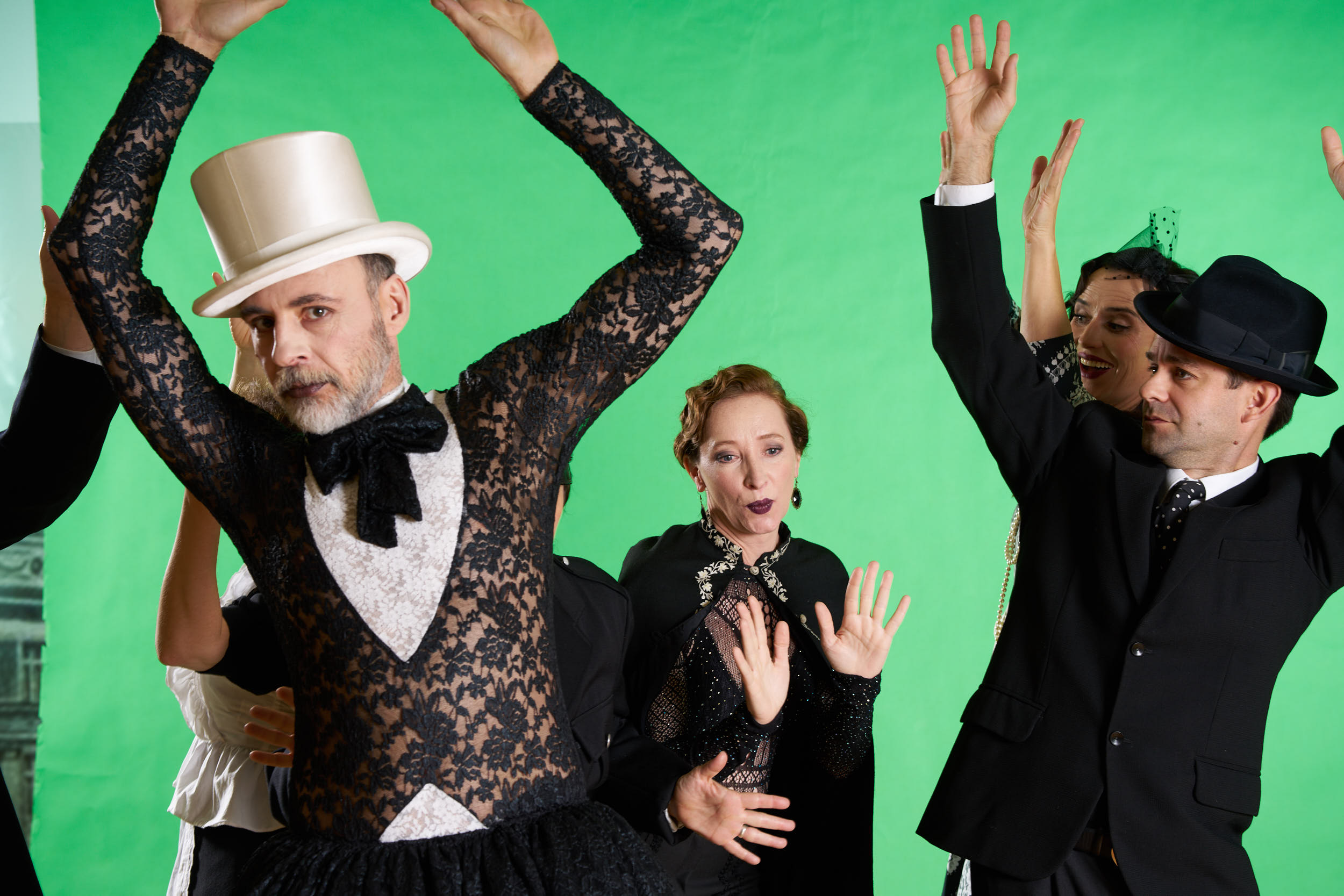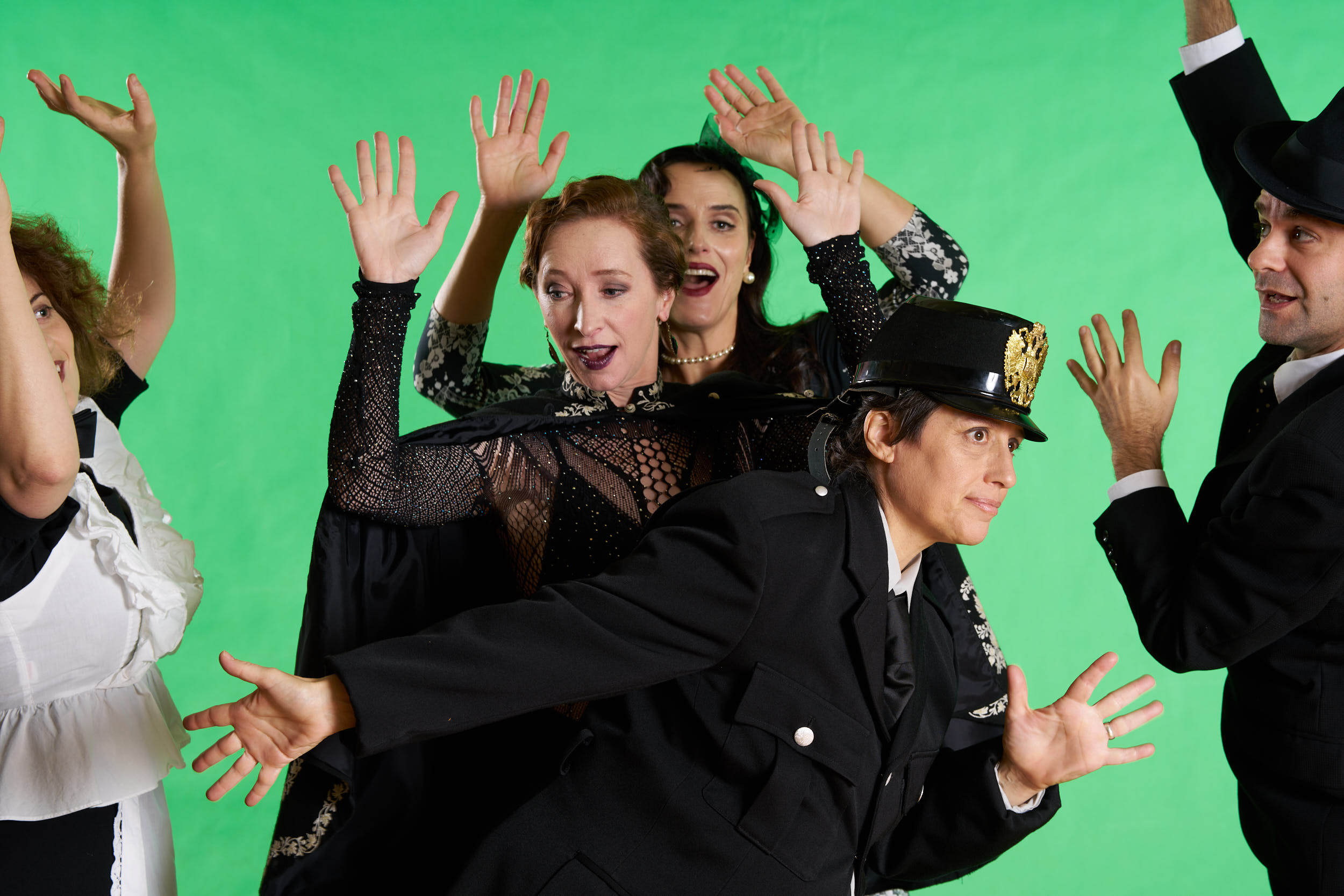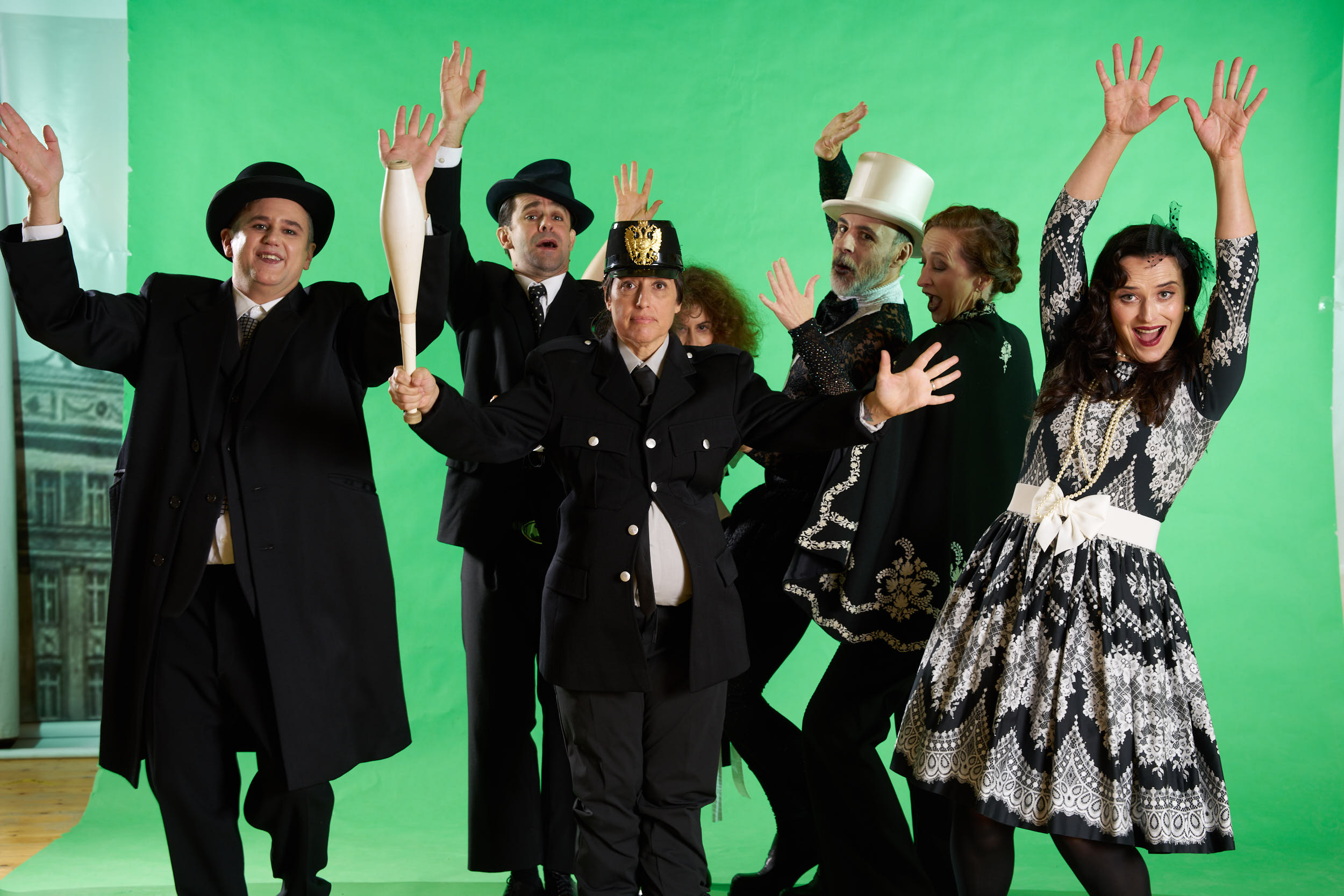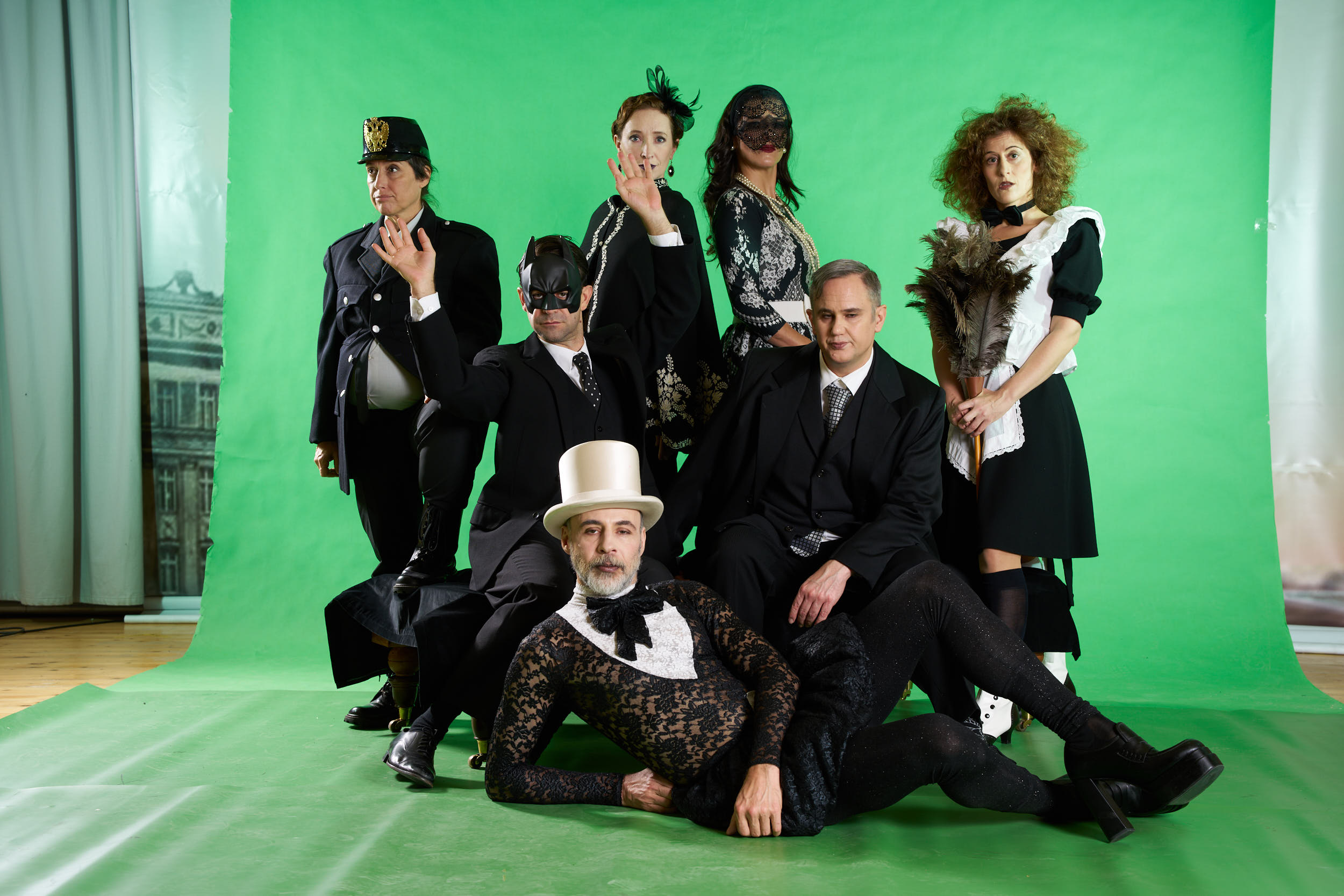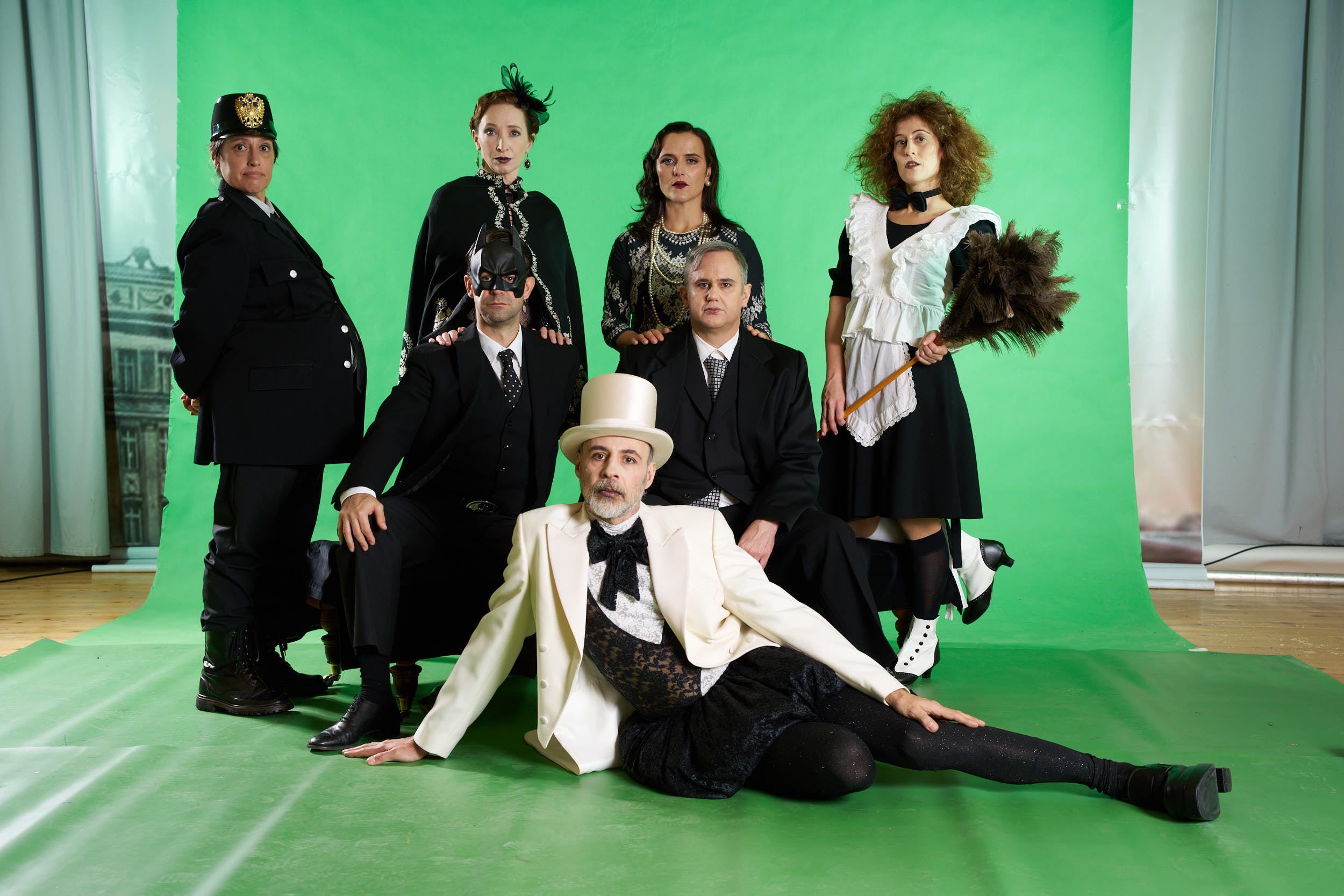(The clips are part of footage we filmed during rehearsals as tryouts, and web PR.)
The Rashomon of Interpretation: On the Problematic Nature of Reading Texts, Scripts, and Music Scores.
The act of interpretation has long been recognized as both indispensable and unstable. The so-called Rashomon effect—derived from Akira Kurosawa’s 1950 film, in which multiple witnesses offer irreconcilably different accounts of the same event—provides a productive framework for thinking about the hermeneutic challenges posed by texts, plays, and archival scripts. In interpretation, as in Rashomon, the problem is not simply one of error or deception, but of perception itself.
When we approach a play text, particularly one mediated by history, translation, or incomplete documentation, we enter a field of competing claims. Each interpreter—scholar, director, actor, reader, or viewer inevitably produces a version shaped by their cultural position, aesthetic priorities, and political investments. The notion of a singular, “original meaning” becomes elusive, if not fundamentally unrecoverable. Roland Barthes’s famous declaration of the “death of the author” underscores this point: meaning does not reside in a fixed intention. Still, it is generated through the interplay between text and reader.
Theatre exemplifies this instability acutely, since scripts are not autonomous literary artifacts but prompts for performance. Stage directions, archaic idioms, or even apparent silences can invite divergent readings: literal, metaphorical, ironic, or symbolic. As Paul Ricoeur observed, the act of interpretation always involves a surplus of meaning, an inexhaustibility that resists closure. A single gesture in an ancient script may therefore yield contradictory yet equally defensible stagings.
From a hermeneutic standpoint, interpretation can be understood as a negotiation between textual evidence and the interpreter’s horizon of expectation. Hans-Georg Gadamer reminds us that understanding is always a “fusion of horizons,” never a neutral retrieval of intention. In this sense, the multiplicity of interpretations does not represent a failure of hermeneutics but its very condition. Jacques Derrida goes further, suggesting that the play of language—its différance—precludes any final, authoritative meaning.
This multiplicity, however, is not without consequence. To interpret a script is to intervene in its reception history, to privilege one possible future of performance over countless others. Theatrical interpretation is therefore both an act of preservation and of invention. Directors, in particular, face the paradox of remaining faithful to the text while also rendering it intelligible and resonant for contemporary audiences. What emerges is a field of tensions: between fidelity and adaptation, tradition and innovation, historical reconstruction and presentist appropriation.
The “Rashomon of interpretation”, then, describes not only the proliferation of meanings but also the impossibility of arbitration between them. No single interpretive account can claim absolute authority, yet each demands recognition as legitimate. Rather than lamenting this condition, we might understand it as constitutive of the vitality of texts. The fact that a script can sustain divergent readings across centuries is precisely what allows it to remain alive in cultural memory.
In sum, interpretation must be approached less as the solving of a riddle than as the staging of multiplicity. To read or perform a text/script is not to recover what it “truly” meant, but to acknowledge and work productively within the fractures, contradictions, and competing voices that constitute its afterlife.
Photo shoot session
- The Rashomon of Interpretation: Die Fledermaus Across VersionsFew works illustrate the instability of interpretation as vividly as the genealogy of Die Fledermaus. What begins as Das Gefangnis, a farce by the German playwright Julius Roderich Benedix turned later into a light French vaudeville, Le Réveillon by Henri Meilhac and Ludovic Halévy (1872), and then transforms through layers of adaptation into Johann Strauss II’s celebrated operetta Die Fledermaus (1874), Ernst Lubitsch’s silent comedy So This Is Paris (1926), and eventually the Powell and Pressburger film Oh… Rosalinda!! (1955). Each version insists upon its own “truth” of the material, yet none can claim definitive authority. Here, we see the Rashomon effect of interpretation enacted historically: the same story reimagined, reframed, and refracted across different contexts, each interpretation rewriting the text while claiming continuity with it.
- From Le Réveillon to Strauss’s OperettaMeilhac and Halévy’s vaudeville, rooted in Parisian theatrical tradition, thrives on mistaken identities, sexual intrigue, and the satirizing of bourgeois pretension. When Karl Haffner and Richard Genée adapted it for Vienna as Die Fledermaus, they shifted the action from a Parisian réveillon feast to a Viennese masked ball. This change was not simply technical but hermeneutic: a new horizon of meaning was opened. As Gadamer insists, “understanding is always the fusion of horizons”—Parisian satire and Viennese operetta converge to create something neither wholly French nor wholly Austrian. Strauss’s waltzes saturate the farce with musical sensuality, producing not a translation but a transformation: an allegory of Habsburg society, glittering on the edge of decline.
- Lubitsch’s So This Is ParisErnst Lubitsch seemed fascinated by this storyline. He first filmed Das fidele Gefängnis, based on the German play, in 1917 Berlin, and then the French version in Hollywood. Ernst Lubitsch’s 1926 silent comedy strips the work of Strauss’s music, replacing it with cinematic rhythm. The masquerade ball becomes a montage of Jazz Age excess: quick cuts, visual wit, and a frenetic modern dance. Here, the text’s “surplus of meaning” emerges, in Paul Ricoeur’s sense: “The text’s meaning surpasses its author and his situation”⁵—what began as bourgeois satire becomes a celebration of urban modernity and cinematic play. Fidelity to the skeleton of farce remains, but the cultural significance mutates.
- Oh… Rosalinda!!Michael Powell and Emeric Pressburger’s Oh… Rosalinda!! (1955) shifts the action yet again, this time into Allied-occupied Vienna. Eisenstein and Rosalinda no longer play at disguises merely for erotic intrigue but enact allegories of Cold War masquerade, where national identities are as unstable as lovers’ masks. Strauss’s music acquires new irony: once the soundtrack of Habsburg opulence, the waltz now accompanies a Vienna fractured by occupation. Derrida reminds us that language itself works through différance, the endless deferral and displacement of meaning: “The signified concept is never present in itself… it is always already in the position of the signifier”. In this Cold War retelling, Strauss’s operetta can no longer signify what it once did; its meaning is perpetually deferred, rewritten by history.
- The Rashomon of VersionsTaken together, these adaptations reveal the impossibility of a single authoritative reading. Each version interprets disguise and mistaken identity differently: as Parisian satire, Viennese operetta, Weimar cinematic play, or Cold War allegory. As in Kurosawa’s Rashomon, the “same” story splinters into incompatible testimonies, none dismissible, all illuminating.Roland Barthes reminds us that “a text is not a line of words releasing a single ‘theological’ meaning… but a multidimensional space in which a variety of writings, none of them original, blend and clash.” Die Fledermaus is precisely such a space: rewritten in every performance and adaptation, not despite these contradictions, but because of them.If we ask which version is most “faithful”, the question collapses. To Meilhac and Halévy, Strauss already betrayed the text; to Strauss, Lubitsch betrayed it again; to Lubitsch, Powell and Pressburger did the same. But in each so-called betrayal, the work survives. The vitality of Die Fledermaus lies precisely in its Rashomon-like multiplicity: a text whose identity is always in disguise, always masked, and therefore always open to subsequent interpretation.
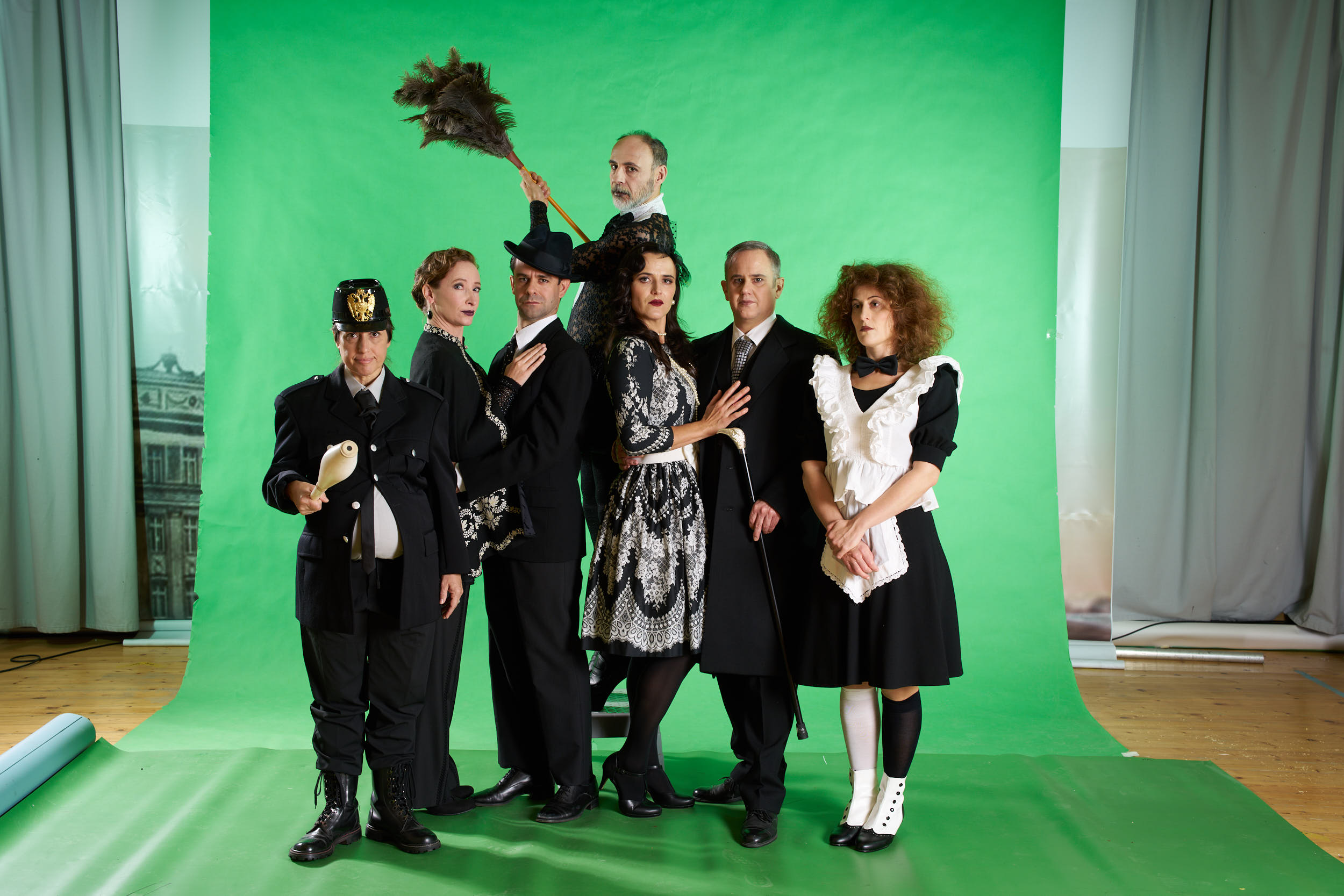
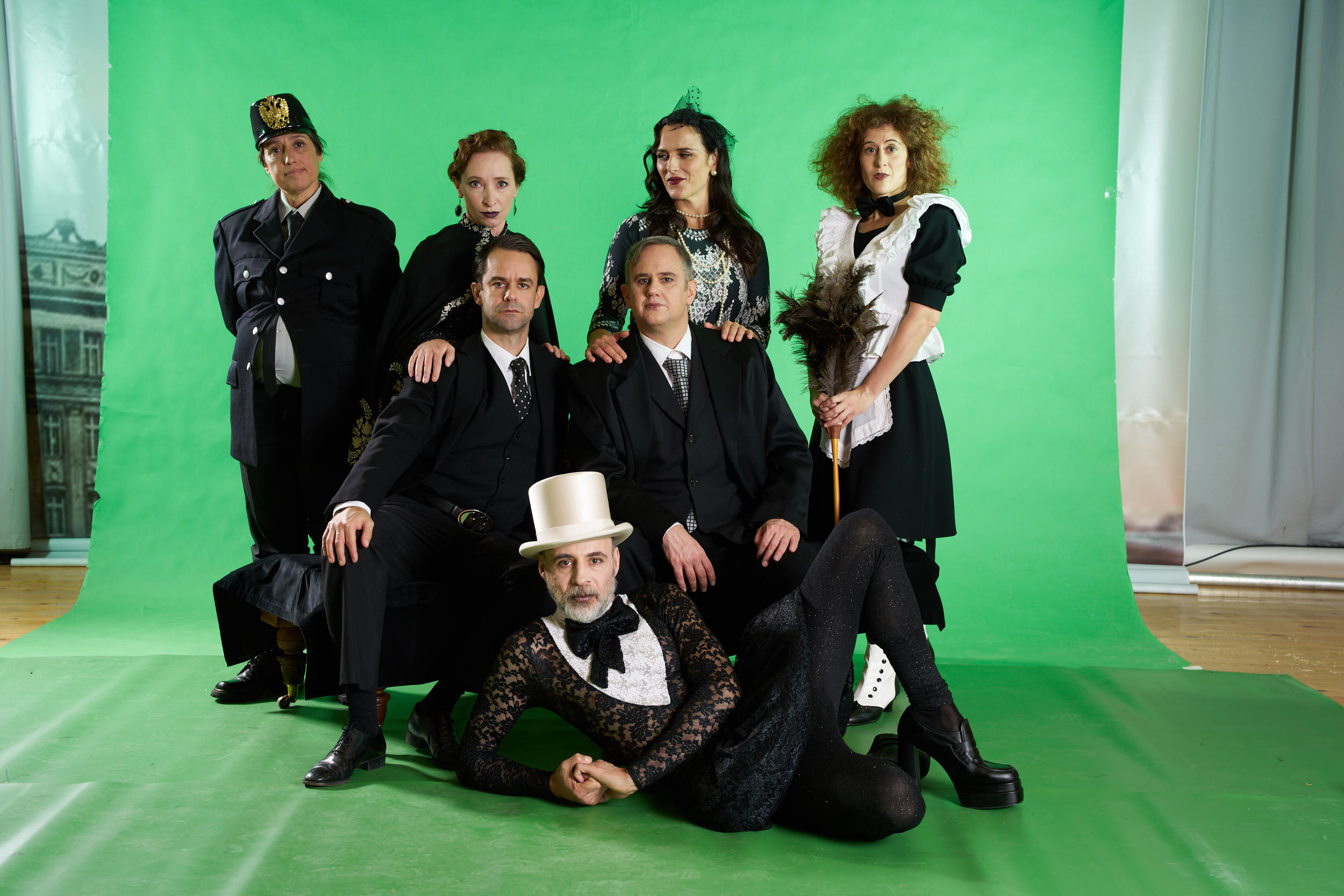
So This Is Vienna!: A toxic dreams Version and the Rashomon of Interpretation
For So This Is Vienna!, we play with the multiple manifestations and productions of the original texts and stories. One must admit, at its core, this is a very basic farce. We retain the fundamental plot of Lubitsch’s 1926 film, while layering it with new storylines, intertitles, and textual elements drawn from Die Fledermaus. Most crucially, we replace Lubitsch’s original silent-film music with a new score that reinterprets Johann Strauss’s composition—omitting the vocal parts—to offer a contemporary reflection on the operetta’s musical essence.
Like Lubitsch, we are not concerned with the story per se. Our interest lies in interpretation and adaptation. How can a text like Die Fledermaus be staged today? How can Lubitsch’s So This Is Paris, transformed into So This Is Vienna!, speak to modern audiences? By juxtaposing multiple texts, layering historical and new material, and experimenting with staging and filming techniques, we foreground the history of interpretation itself: how meaning shifts, accumulates, and fractures across time. In this sense, staging Die Fledermaus today demands an acknowledgment of its status as a historical document.
Lubitsch’s film demonstrates how sophisticated comedy can serve as a vessel for interpretation. Within each frame, the film seems to proclaim, „fake is real“. The story and the anti-story coexist simultaneously, and this duality mirrors the operetta’s own structure: a farce that constantly signals its own artificiality. What we inherit from Lubitsch is less narrative than choreography—the way characters move, collide, and interact with one another. These movements are themselves a language, conveying the farce and its interpretive subtext.
In our rehearsals, we devoted extensive time to studying the film’s physicality. Actors first copied the gestures and blocking, then translated them into a performative language that sits between silent film acting and contemporary movement theater. The result is a hybrid form: part reenactment, part interpretation, part dance. By foregrounding movement, we allow the audience to experience both the story and the multiplicity of interpretations that surround it—embodying, in performance, the Rashomon of interpretation itself.
Fledermaus gefleddert / Appropriated
The composition for So This Is Vienna! takes Johann Strauss Jr.’s Die Fledermaus as its point of departure, a work long associated with the euphoric optimism of 1870s Vienna. The operetta’s score was first transcribed into MIDI format, shifting it from the domain of notation into that of digital code. This translation functions as what Bolter and Grusin (1999) describe as remediation: the inscription of an existing medium within another, here repositioning Strauss’s music in the symbolic order of computation. Once digitized, the material was rendered through emulations of MOOG modular synthesizers, in deliberate dialogue with Wendy Carlos’s seminal interventions in the electronic revoicing of the classical canon.
Rather than offering reproduction, the work enacts what Linda Hutcheon (2006) terms appropriation: a process of quotation, transformation, and critical reframing. Segments of the score were cut, looped, and spliced, then rearranged to correspond loosely with Ernst Lubitsch’s 1926 film So This Is Paris. Harmonic and melodic motifs from Strauss were expanded into new passages; rhythmic alterations displaced the operetta’s Viennese waltz idiom toward Latin grooves or electronic beats. In this way, the operetta becomes both source material and raw sonic archive.
Through this method, unexpected affinities emerged between Strauss’s idiom and late 20th-century popular music—echoes of OMD’s Maid of Orleans or New Order’s Blue Monday. These resonances, far from accidental, were deliberately accentuated, underscoring Jameson’s (1991) observation that postmodern aesthetics often collapse the distinction between “high” and “low”, producing new forms of pastiche and citation. The operetta, reprocessed through electronic sound technologies, thus reveals its latent kinship with the logics of pop modernism.
If Strauss’s Fledermaus once staged a sugar-coated vision of bourgeois festivity, its appropriation here speaks in a darker register. The music shifts into anxious, existential tonalities, reflecting on the ruptures, catastrophes, and disillusionments of the 20th century. The closing refrain, Glücklich ist, wer vergisst…, is preserved as an ambivalent citation: at once consolatory and ironic, a symptom of Austria’s fraught cultural memory.
The generational context mediates the reception itself. For many Austrians, Wendy Carlos’s electronic Bach was not an avant-garde gesture but part of everyday childhood experience, as his Musette in D major functioned for years as the theme of the television program Betthupferl. This coincidence folds Strauss, Carlos, and Austrian pop culture into the same circuit of memory and recognition.
In this sense, Fledermaus gefleddert stages a multi-layered negotiation of tradition and technology, operating simultaneously as homage, critique, and reinvention. It mobilizes Strauss’s operetta as a site of remediation and appropriation, opening it to the temporal dissonances of modernity, the media histories of electronic sound, and the cultural sedimentations of collective memory.



